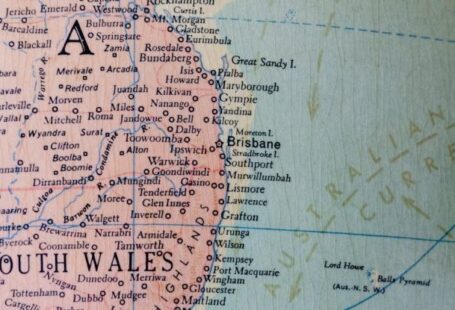Creating a map involves more than just plotting points and lines. The projection you choose plays a crucial role in how accurately your map represents the Earth’s surface. With a variety of projections available, selecting the right one can be overwhelming. Here are some key factors to consider when choosing the right projection for your map:
Understand the Purpose of Your Map
Before selecting a projection, it is essential to understand the purpose of your map. Are you creating a world map for general reference or a thematic map focusing on specific regions or themes? Different projections excel at representing different aspects of the Earth’s surface, so aligning the projection with your map’s purpose is crucial for accurate representation.
Consider Distortion
One of the most critical aspects of choosing a projection is understanding how it distorts the Earth’s surface. Each projection distorts certain elements, such as area, shape, distance, or direction. For example, an equal-area projection preserves accurate area measurements but distorts shapes, while a conformal projection maintains shape accuracy but distorts area. Consider which type of distortion is most acceptable based on your map’s purpose.
Evaluate Map Scale
The scale of your map also plays a significant role in determining the appropriate projection. Some projections are better suited for small-scale maps, such as world maps, while others are more suitable for large-scale maps that focus on specific regions. Consider the level of detail you need to display and choose a projection that can accurately represent that scale without significant distortion.
Choose a Projection Type
There are several types of map projections, each with its unique characteristics. Common types include cylindrical, conic, and azimuthal projections. Cylindrical projections are ideal for world maps as they preserve latitude and longitude lines as straight lines. Conic projections are best for mapping mid-latitude regions, while azimuthal projections are suitable for polar regions. Understanding the strengths and weaknesses of each projection type will help you make an informed decision.
Select a Projection System
In addition to choosing a projection type, you must also select a projection system. Common projection systems include Mercator, Robinson, and Lambert conformal conic. The Mercator projection is well-suited for navigation due to its straight rhumb lines, while the Robinson projection balances overall distortion for a visually appealing world map. The Lambert conformal conic projection is often used for mapping areas with an east-west orientation, such as the contiguous United States. Consider the specific characteristics of each system to determine which best fits your mapping needs.
Test Different Projections
Ultimately, the best way to choose the right projection for your map is to test different options. Most mapping software allows you to switch between projections to visualize how each one affects the representation of your data. By experimenting with various projections and comparing the results, you can determine which projection best aligns with your map’s purpose and design requirements.
Consider the Audience
When selecting a projection, consider the audience who will be viewing your map. Different projections may be more familiar or intuitive to certain audiences based on their geographic location or background. Choosing a projection that is commonly used or easily understood by your target audience can enhance the map’s effectiveness and usability.
Make an Informed Decision
Selecting the right projection for your map is a critical decision that can significantly impact the accuracy and effectiveness of your visual representation. By considering factors such as map purpose, distortion, scale, projection type, system, audience, and testing different options, you can make an informed decision that ensures your map accurately conveys the intended information. Remember that the goal is to choose a projection that best serves your map’s purpose and effectively communicates spatial information to your audience.





